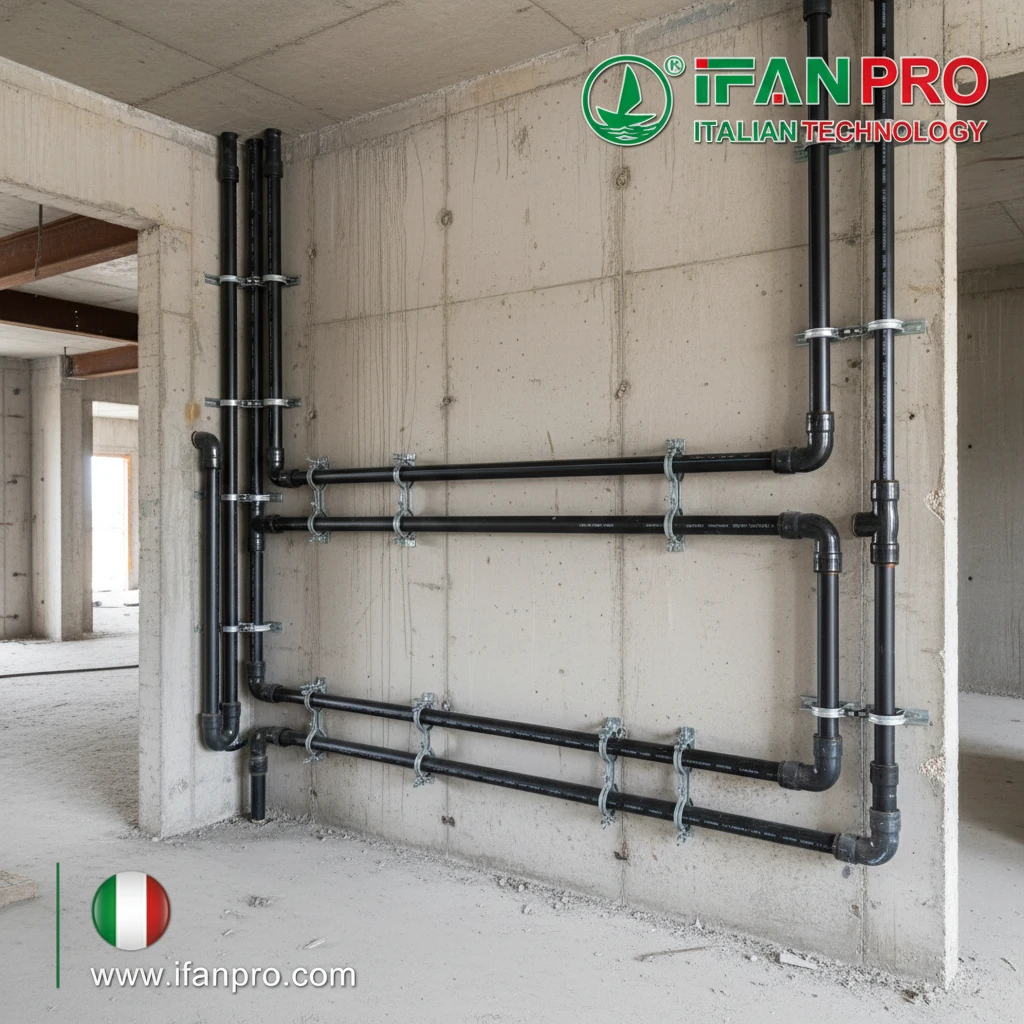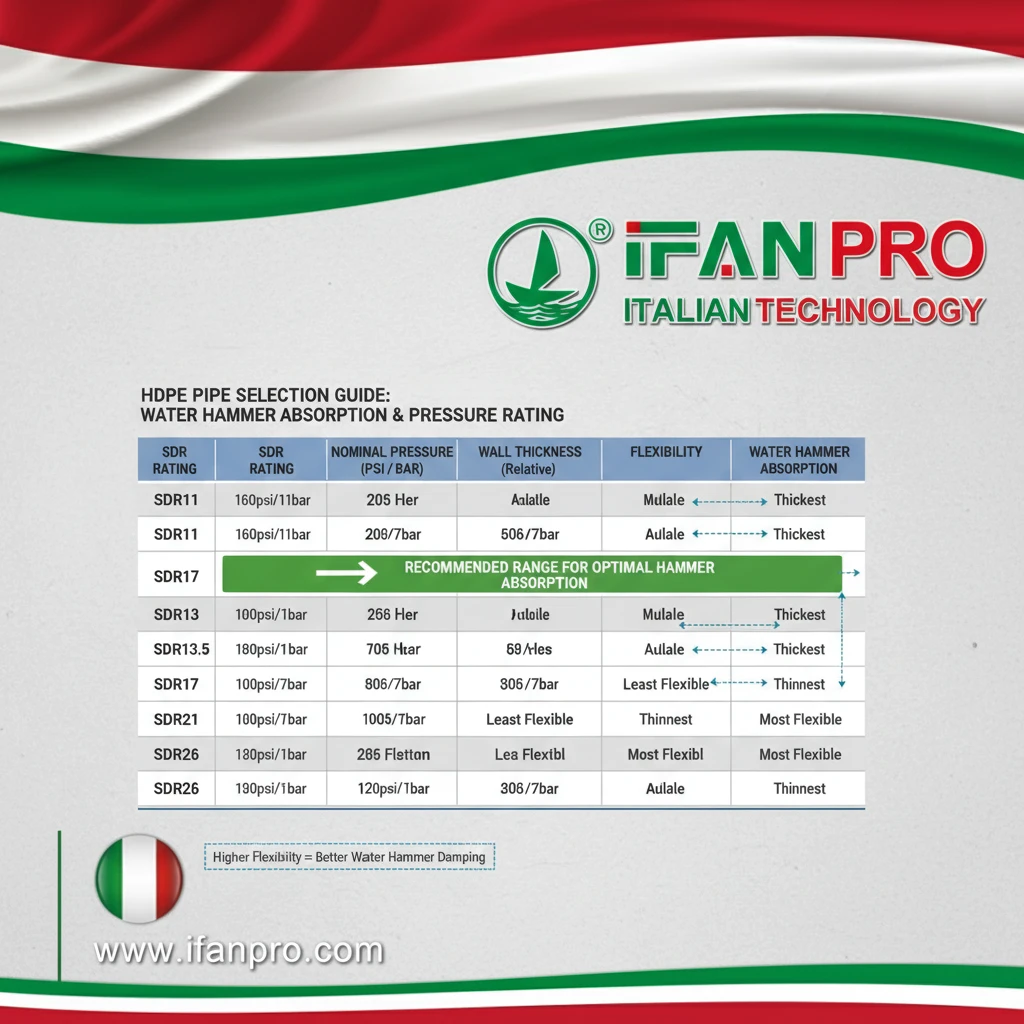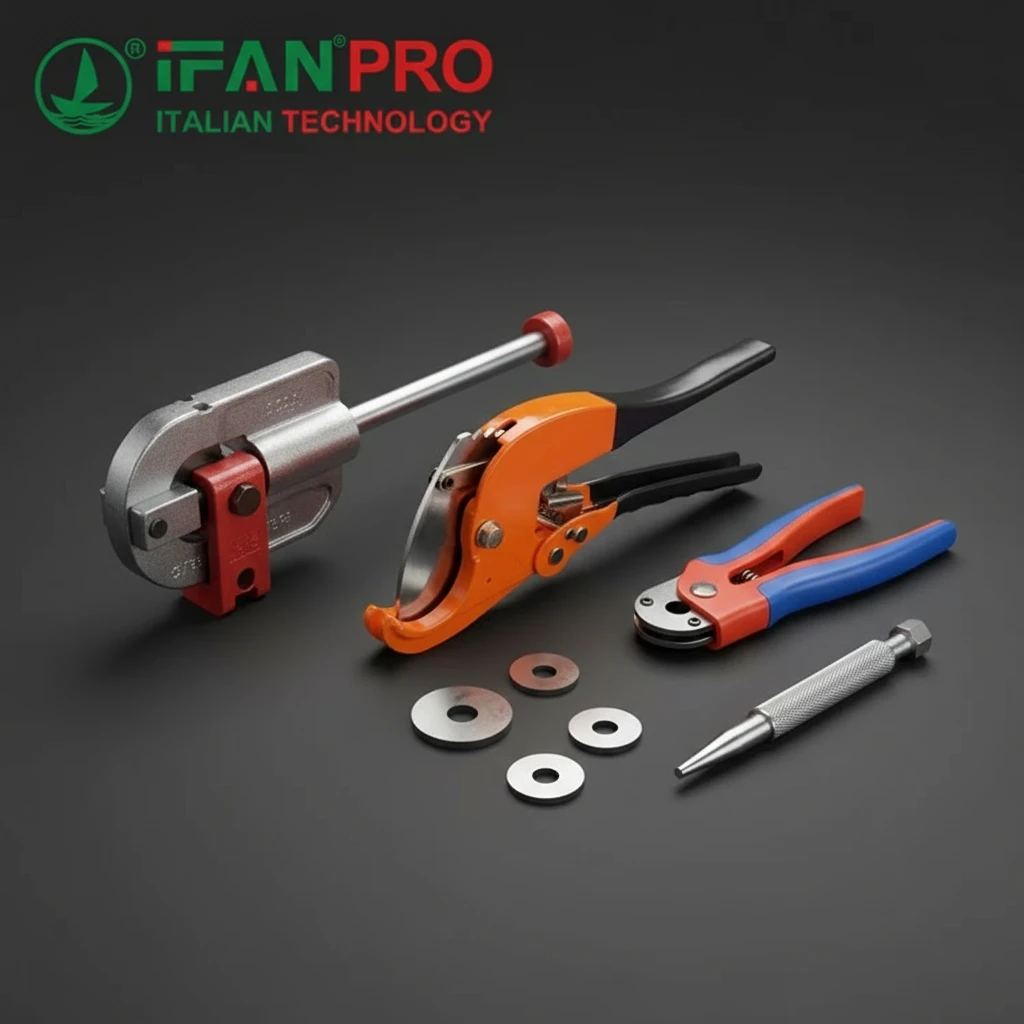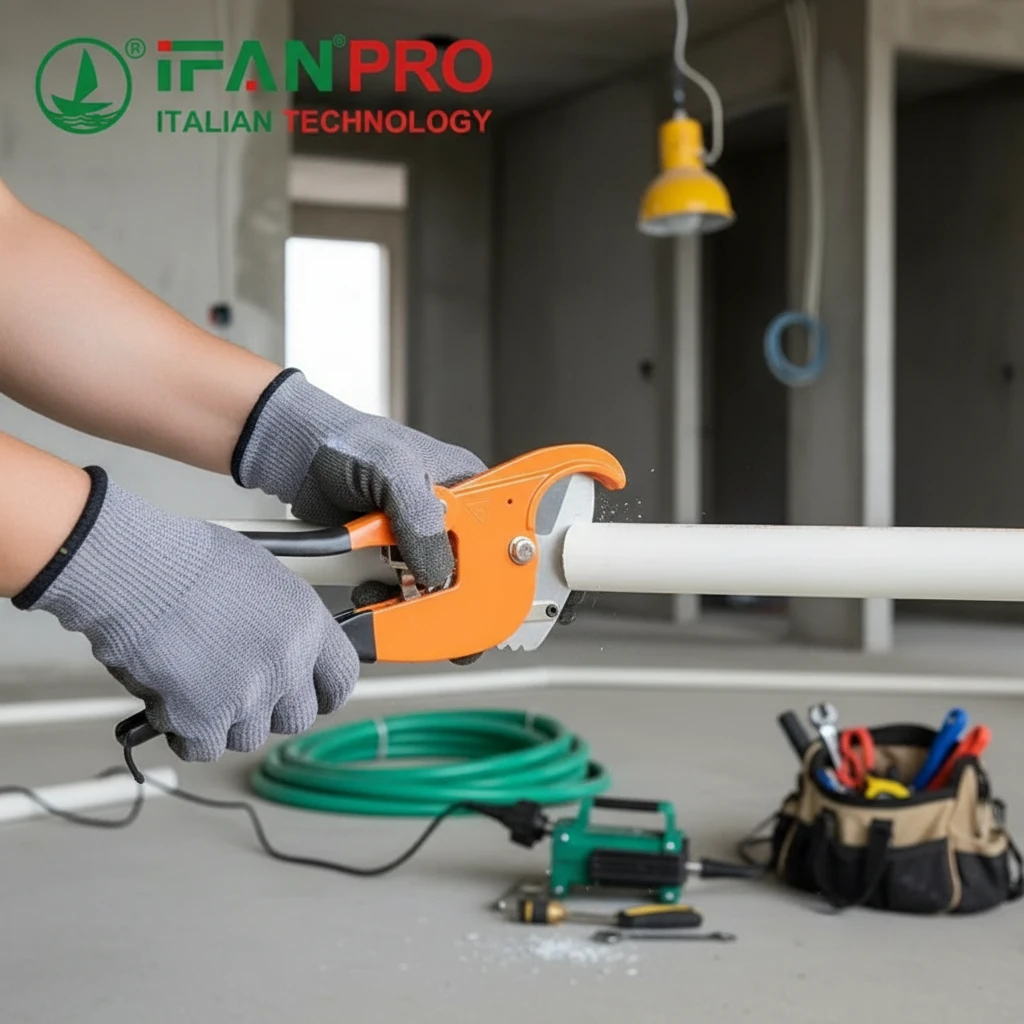I’ve seen water hammer damage firsthand – burst pipes, damaged valves, and constant banging noises that drive homeowners crazy. That’s why I always recommend HDPE as an effective solution.
Yes, ПНД can significantly reduce water hammer noise because its flexible, elastic material absorbs pressure shocks better than rigid pipes. The pipe’s ability to expand slightly under pressure surges dampens the shock waves that cause loud banging noises in traditional plumbing systems.
Let me explain exactly how HDPE achieves this noise reduction and why it’s superior to traditional materials.
How Does HDPE Pipe Material Properties Help Absorb Water Hammer Shock?
Water hammer occurs when flowing water suddenly stops, creating destructive pressure waves. HDPE’s unique properties directly combat this problem.
HDPE absorbs water hammer shock through its material elasticity and flexibility. The pipe walls can expand slightly under pressure surges, then slowly return to their original shape. This action converts the sudden shock energy into gentle movement, dramatically reducing the noise and stress on the system.

The Science Behind HDPE’s Shock Absorption
Water hammer creates pressure spikes that can reach 5-10 times the normal system pressure. Traditional rigid pipes can’t handle these spikes well, but HDPE behaves differently due to its molecular structure.
HDPE is a thermoplastic with long polymer chains that can stretch and move. When a pressure surge hits, these chains allow the pipe wall to expand slightly. This expansion acts like a shock absorber in a car – it takes the sudden impact and spreads it out over time. The energy that would normally create loud banging noises gets converted into gentle pipe movement.
Key Material Properties That Help
Several specific properties make HDPE ideal for handling water hammer:
- High Strain Capacity: HDPE can stretch up to 700% before breaking. This incredible elasticity lets it absorb massive pressure surges without damage
- Low Modulus of Elasticity: This means HDPE is flexible rather than rigid. It bends under pressure instead of resisting until it breaks
- Creep Resistance: HDPE maintains its shape over time, even after multiple expansions and contractions
- Fatigue Resistance: The material can handle repeated stress cycles without weakening
Pressure Wave Dampening Comparison
The table below shows how different materials handle pressure surges:
| Pipe Material | Pressure Wave Reduction | Mechanism of Action |
|---|---|---|
| ПНД | 70-90% reduction | Pipe expansion absorbs energy, then slowly releases it |
| Copper | 20-30% reduction | Minimal expansion, most energy transmitted as noise |
| PVC | 40-60% reduction | Some expansion but limited by brittleness |
| Steel | 10-20% reduction | Almost no expansion, full energy transmission |
The combination of these properties makes HDPE naturally resistant to water hammer effects. While other systems need mechanical water hammer arrestors, HDPE provides built-in protection through its material science.
What Installation Techniques Maximize HDPE’s Water Hammer Noise Reduction?
Proper installation is crucial for getting the full benefits of HDPE’s water hammer protection. I’ve trained many installers on these techniques.
These installation techniques maximize HDPE’s water hammer noise reduction: use proper support spacing to allow natural movement, install gradual bends instead of sharp turns, ensure correct fusion joint quality, and include air chambers where needed. Proper planning of pipe routes to avoid sudden direction changes also helps significantly.

Support and Alignment Best Practices
How you support HDPE pipes dramatically affects their noise reduction capabilities. Unlike rigid pipes that need tight supports, HDPE works best with slightly looser arrangements.
Install supports every 4-6 feet for horizontal runs and every 8 feet for vertical runs. Use loose clamps that don’t squeeze the pipe too tightly. This allows the pipe to expand and move slightly during pressure surges. The movement absorbs energy that would otherwise become noise.
Avoid sharp 90-degree bends whenever possible. Use sweeping 45-degree bends or even better, large radius elbows. Sudden direction changes create turbulence and amplify water hammer effects. Gentle curves help maintain smooth water flow.
Fusion Joint Quality Control
The quality of fused joints directly impacts water hammer performance. Poor joints create turbulence and resistance points that trigger water hammer.
- Butt Fusion: Ensure perfect alignment and proper heating time. The joint should be smooth inside without any lip or obstruction
- Electrofusion: Use certified fittings and follow manufacturer timing exactly. Inspect each joint visually
- Socket Fusion: Make sure pipe ends are perfectly square and clean before heating
A perfectly fused joint maintains the smooth interior surface that prevents turbulence. Any irregularity inside the pipe creates a starting point for water hammer.
Installation Checklist for Water Hammer Prevention
| Task | Importance | Best Practice |
|---|---|---|
| Pipe Support | Critical | Use loose clamps, proper spacing |
| Direction Changes | High | Use 45° elbows, avoid sharp turns |
| Joint Quality | Critical | Perfect fusion, smooth interior |
| Route Planning | High | Minimize direction changes |
| Air Chambers | Medium | Install at key locations |
Even with HDPE’s natural resistance, including traditional air chambers at critical points like quick-closing valves provides extra protection. The combination of HDPE’s material properties and proper installation techniques creates a comprehensive solution.
How Does HDPE Compare to Metal Pipes in Preventing Water Hammer Noise?
Having worked with both materials, I can confirm HDPE’s superior performance for water hammer prevention in most applications.
HDPE performs much better than metal pipes for water hammer prevention because it absorbs shock energy through expansion, while metal pipes transmit nearly all the energy as noise and vibration. HDPE’s flexibility provides natural dampening, whereas rigid metal pipes amplify the hammering effect throughout the system.

Vibration and Noise Transmission
The fundamental difference lies in how each material handles pressure waves. Metal pipes are rigid and cannot expand significantly under pressure. When water hammer occurs, the metal transmits virtually all the energy through the pipe walls as vibration and noise.
HDPE behaves completely differently. The flexible pipe walls expand when pressure spikes hit, absorbing the energy. Then they slowly contract back to normal. This action converts the sharp, loud bang into a gentle, barely noticeable movement.
Long-Term Performance Differences
The comparison becomes even more dramatic over time. Metal systems typically suffer from:
- Fatigue Failure: Repeated water hammer cycles cause metal fatigue at joints and welds
- Corrosion Acceleration: Water hammer vibrations speed up corrosion processes
- Loosened Fittings: Constant shaking works threaded connections loose
- Noise Increase: As the system ages, water hammer noises often get louder
HDPE systems actually maintain their performance because:
- No Corrosion: The material doesn’t rust or corrode from water hammer effects
- Flexibility Maintained: HDPE keeps its elastic properties for decades
- Joint Integrity: Properly fused joints don’t loosen over time
- Consistent Performance: Noise reduction remains effective throughout the pipe’s life
Performance Comparison Table
| Characteristic | HDPE Performance | Metal Pipe Performance |
|---|---|---|
| Noise Reduction | Excellent (70-90% reduction) | Poor (minimal reduction) |
| Vibration Dampening | Excellent natural absorption | Amplifies and transmits vibration |
| Long-Term Reliability | Maintains performance | Degrades over time |
| Maintenance Needs | Minimal | Requires water hammer arrestors |
| System Stress | Low stress on components | High stress throughout system |
Cost and Maintenance Implications
The performance differences lead to significant practical consequences. Metal systems often require additional water hammer arrestors, which add cost and maintenance requirements. These mechanical devices can fail over time and need replacement.
HDPE systems provide built-in water hammer protection without additional devices. The initial material cost might be similar, but the long-term savings in maintenance and component replacement make HDPE more economical.
What Are the Best HDPE Pipe Specifications for Water Hammer Protection?
Choosing the right HDPE specifications makes a huge difference in water hammer performance. From my experience, these factors matter most.
The best HDPE pipe specifications for water hammer protection include: SDR 11 or SDR 17 for optimal wall thickness, PE 100 or PE 4710 resin for maximum strength, proper diameter sizing to maintain flow velocity below 5 fps, and certified pressure ratings that exceed your system’s maximum working pressure by at least 50%.

Understanding SDR and Pressure Ratings
The Standard Dimension Ratio (SDR) indicates the relationship between pipe diameter and wall thickness. For water hammer protection, you need the right balance:
- SDR 11: Thicker walls, more resistance to expansion, good for high-pressure systems
- SDR 13.5: Balanced performance for most applications
- SDR 17: Thinner walls, more expansion capability, excellent for shock absorption
- SDR 21: Maximum flexibility but lower pressure capacity
For most residential applications, SDR 13.5 or SDR 17 provides the ideal combination of pressure capacity and shock absorption. The thinner walls in SDR 17 allow more expansion for better water hammer protection.
Material Grade Selection
Not all HDPE is created equal. The resin type significantly affects performance:
- PE 80: Good basic performance, adequate for most applications
- PE 100: Superior strength and stress crack resistance, better for water hammer
- PE 4710: Premium grade with best overall performance characteristics
PE 100 or PE 4710 resins provide the best combination of strength and flexibility for handling repeated pressure surges. They maintain their properties better over decades of use.
HDPE Specification Guide for Water Hammer Applications
| Application | Recommended SDR | Material Grade | Pressure Safety Factor |
|---|---|---|---|
| Сантехника для жилых помещений | SDR 13.5 – 17 | PE 100 | 1.5x max working pressure |
| Commercial Systems | SDR 11 – 13.5 | PE 100/PE 4710 | 2.0x max working pressure |
| High-Pressure Mains | SDR 9 – 11 | PE 4710 | 2.5x max working pressure |
| Low-Pressure Applications | SDR 17 – 21 | PE 100 | 1.25x max working pressure |
Diameter and Velocity Considerations
Proper pipe sizing is crucial for water hammer prevention. Oversized pipes cost more but don’t necessarily perform better. Undersized pipes create high velocity that worsens water hammer.
Calculate your flow requirements and select pipe diameters that maintain flow velocity below 5 feet per second. Higher velocities dramatically increase water hammer risk. For critical applications, keep velocity below 4 fps for maximum protection.
Always choose pipes with pressure ratings that significantly exceed your maximum system pressure. This safety margin handles unexpected pressure surges without stressing the system.
Заключение
ПНД effectively reduces water hammer noise through its flexible material properties and proper installation. For optimal results, choose IFAN’s certified Трубы ПНД with PE 100 resin and correct SDR ratings for your specific application needs.














Последние комментарии